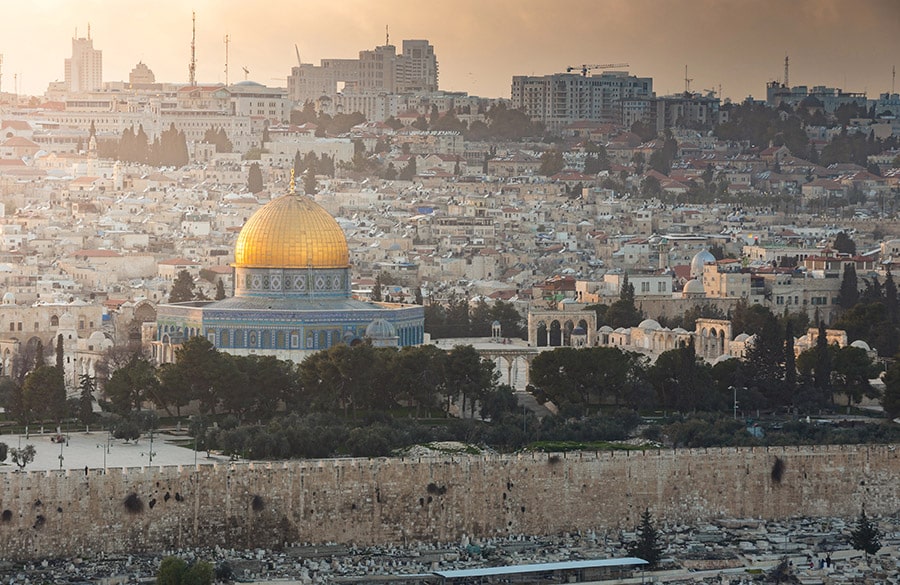Stephen Rand
THE FAMILY TREE
INTRODUCTION
Isn’t it exciting when you know that someone wants to read the story of Jesus and explore it for themselves? You give them a New Testament, thrilled that they are going to sit down and give it a try. Then you remember: they will start at the first page, and they will get straight into that long list of names. That’s if they get past the word ‘genealogy’ in the first sentence.
It is a salutary reminder that the Bible is an ancient book from the east rather than a modern book from the west. I knew when I started writing this book that I had to start with something interesting, to grab your attention. I’m hoping I achieved that: if you’ve got this far, I’m still ahead! But if I had started with a list of my ancestors…?
Genealogies are family trees, long lists of names that appear not only right at the beginning of Matthew’s Gospel but also as a prelude to the ministry of Jesus in Luke 3. As a child, I was fascinated by the strange repetition of the word ‘begat’, one of the most colourfully archaic words in the King James Version. And even though they are the start of the Christmas story, these verses don’t often feature in the average carol service: they are not ideal for public reading, packed with difficult-to-pronounce names that are largely unknown.
But both Gospel writers used them to say something deeply profound about Jesus. Luke works backwards. His family tree begins with Jesus (Luke 3:23) and, in 75 steps, takes his readers back to Adam, who is described with a great and certain finality as ‘the son of God’. Matthew begins with Abraham, the father of the Jewish nation; Luke traces the line of Jesus back to the father of the human race. Matthew’s Gospel is primarily written for Jewish readers, revealing Jesus as the promised Messiah; Luke is writing for Gentiles, and so he emphasizes the divine origin of common humanity. Jesus did not arrive on planet earth as a space invader, an alien from beyond the stars. His advent was miraculous, certainly, but he was a human being with a family tree—antecedents.
My wife and I have just heard that we are to be grandparents! A new generation is to be added, a new line on the family tree. Of course, as we get older we tend to be more concerned to record our family history. We recognize that, as our parents advance in years, we risk losing their generational memory of half-forgotten great-aunts and deeply respected great-grandparents who exist for us in sepia tones on ancient photographs.
When my father died, we inherited our share of the family photographs. My wife was prompted to make several collages: one for ourselves that merged the Hicks/Hunt ancestry with the Rand/Kennedy line; one for each of our daughters that captured
their childhood experience in the context of their relations. To us they are fascinating, an endless source of anecdote and memory; to visiting relatives they are an opportunity for exploration, of adding to the collective memory. And to friends, of course, they are no more than a curiosity, sometimes examined for signs of the origins of the peculiarities of the
These collages inevitably spark one common topic of conversation: spotting the family likeness. The nose of this uncle, the eyes of a grandmother; it is a kind of biological jigsaw puzzle, always fascinating, never conclusive. Luke and Matthew were completely conclusive: Jesus was the son of Abraham, the son of David, the son of Adam, the son of God. It was from these antecedents that he gained his family likeness—his priestly royalty, fully human, fully divine.
Alongside that profound revelation, the family tree also indicates a paradox: the perfect man had a far from perfect family. There wasn’t just one black sheep; there were several, almost a flock—the kind of people that it would be polite to gloss over. But Matthew and Luke are completely upfront. They know that part of the purpose of the family tree is to reveal that God’s purposes are not worked out through saints but through sinners.
Here there is catastrophic failure, brokenness, rebellion, crime and treachery. There are women of ill repute, foreigners, high-born and low-born. In fact, as the newspaper advertisement used to say, ‘All human life is here.’ Exactly.
So let’s begin Advent by turning a few pages of the family album.
ADAM: LET’S START AT THE VERY BEGINNING
God created human beings in his own image, in the image of God he created them; male and female he created them. GENESIS 1:27
When the woman saw that the fruit of the tree was good for food and pleasing to the eye, and also desirable for gaining wisdom, she took some and ate it. She also gave some to her husband, who was with her, and he ate it. Then the eyes of both of them were opened, and they realized they were naked; so they sewed fig leaves together and made coverings for themselves. Then the man and his wife heard the sound of the Lord God as he was walking in the garden in the cool of the day, and they hid from the Lord God among the trees of the garden. But the Lord God called to the man, ‘Where are you?’ He answered, ‘I heard you in the garden, and I was afraid because I was naked; so I hid.’ And he said, ‘Who told you that you were naked? Have you eaten from the tree from which I commanded you not to eat?’ The man said, ‘The woman you put here with me—she gave me some fruit from the tree, and I ate it.’
Then the Lord God said to the woman, ‘What is this you have done?’ The woman said, ‘The serpent deceived me, and I ate.’ So the Lord God said to the serpent, ‘Because you have done this, cursed are you above all the livestock and all the wild animals! You will crawl on your belly and you will eat dust all the days of your life. And I will put enmity between you and the woman, and between your offspring and hers; he will crush your head, and you will strike his heel.’ To the woman he said, ‘I will greatly increase your pains in childbearing; with pain you will give birth to children. Your desire will be for your husband, and he will rule over you.’ To Adam he said, ‘Because you listened to your wife and ate from the tree about which I commanded you, “You must not eat of it”, cursed is the ground because of you; through painful toil you will eat of it all the days of your life. It will produce thorns and thistles for you, and you will eat the plants of the field. By the sweat of your brow you will eat your food until you return to the ground, since from it you were taken; for dust you are and to dust you will return.’ GENESIS 3:6–19
Have you ever tried to organize a traditional carol service? Fitting the readings together with the carols is always a challenge, and whichever edited version of the Christmas story you choose, someone will probably miss their favourite passage—and will probably let you know! When I worked at Tearfund, the annual carol service was always the last act of the year, with a staff choir giving up lunch hours for weeks beforehand to ensure a very high standard. Family, friends and former colleagues were invited, a guest speaker of repute secured, and members of staff delivered the readings with due solemnity and skill. But the readings still had to be chosen. One colleague, an Anglican clergyman, insisted that, for the service to be complete, it was not enough to include Mary and Joseph, the birth at
Luke traces the family line back to Adam; when God speaks in the garden of Eden, there is the slightest hint that he is gazing down a line of history yet to be, looking forward towards Jesus. As the cataclysmic tragedy of the fall is recounted and its profound implications pronounced, hope is not quite extinguished. I have vivid memories of reading Voyage to Venus by C.S. Lewis when I was a teenager. The hero travels to a planet untainted by sin, still in the beauty and innocence of the garden of Eden. Then he realizes that the history of earth is about to be played out again, as the inhabitants face the temptation of selfishness and rebellion. I cannot recall the details, but I do remember that I read avidly, desperately hoping against hope that the tragedy would not be repeated. Such was the strength of the writing that it was clear to me just how much hinged on the decision that would be made. Something beautiful beyond description would be lost, and the loss would be terrible, its ripples spreading out through time. Could that beauty ever be regained?
Genesis 3 reveals the awful catastrophe of sin, the devastating and all-enveloping impact of the fall. The forbidden fruit is eaten; the very first and immediate effect is that Adam and Eve are made aware of their nakedness, and cover themselves up. I used to feel very ambivalent about this passage in my youth: it seemed to offer such ammunition to those who were convinced that Christians were fundamentally flawed in their understanding of human sexuality— sin and shame, guilt and nakedness so closely bound together. Now I see the passage as offering a profound insight into the reality of the human condition. At this moment of knowledge there is a decisive shift in the relationship between men and women. In the world that God created, they were equal inheritors and stewards of all that God had made, complementing each other in a mutuality of life and purpose. Now they are so aware of their differences that they have to cover themselves; from this moment, it is difference that dominates the relationships between men and women, mutuality and trust corrupted by exploitation and suspicion.
No sooner is their own relationship compromised than another terrible fracture is revealed. When God comes to walk with them, they hide in fear. Here is all the pathos and pain of a broken romance: the garden walk in the cool of the day will be no more. The human beings made in the image of God, for friendship and fellowship with him, are now hiding fearfully in the trees, pathetically imagining that they can go unnoticed. Then they are turned out of the garden. Instead of caring for the creation they have damaged, they are faced with a battle for survival. Productive work becomes hard labour: ‘cursed is the ground because of you; through painful toil you will eat of it’. Instead of participation in God’s delegation of creative fruitfulness, there will now be suffering: ‘with pain you will give birth to children’. And death entered the reality of human experience: ‘dust you are
and to dust you will return’.
The devastation and despair were complete. The shalom of God— the peace that passes understanding, expressed in positive, lifegiving and life-enhancing relationships for each human being with each other, with their creator God and with their environment—was shattered. The whole creation shares the agony: ‘We know that all creation is still groaning and is in pain, like a woman about to give birth,’ writes Paul (Romans 8:22, CEV).
But here is the hint of hope. To the serpent who had encouraged the disaster, God says that the woman’s offspring ‘will crush your head, and you will strike his heel’ (v. 15). One reading of these enigmatic words is that there would be someone born in this family line who would one day pay the price and reverse the tragedy: recreation, new life, reconciliation, shalom restored. ‘For as in Adam all die, so in Christ all will be made alive’ (1 Corinthians 15:22). This is God’s promise of intervention in human history, giving life to restore life. The Christmas story starts here. And it starts in the loving heart of Father God, creator of the universe, with Jesus—‘the son of Adam, the son of God’ (Luke 3:38).
Loving Father, creator of the universe,
fill our minds with wonder and thankfulness for all you have made;
fill our hearts with sorrow for all that sin has destroyed;
nourish our spirits with the hope that one day all will be restored.
Amen.
From Stephen Rand, When the time was right, Bible readings for the Advent Season




Stay Connected